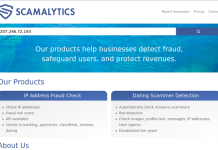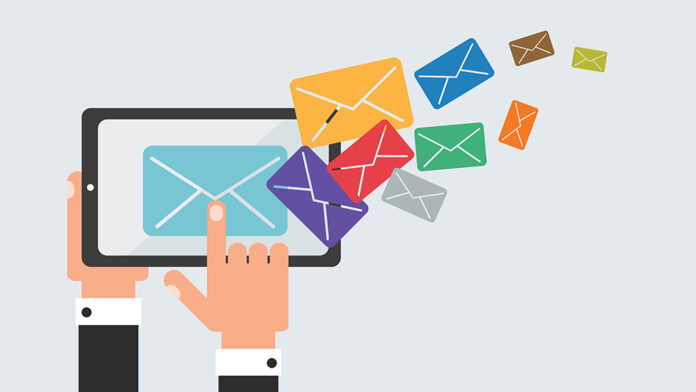
You cannot register anyplace on the internet if you do not have an email address, and your communication options may be limited. Email account providers assist users in obtaining an email address that can be used for registration, communication, and verification purposes.
While professional and corporate email account providers may charge a fee, many free email account providers do not. For personal purposes, a free email account suffices. So you don’t have to spend a single penny.
1. Zoho Mail
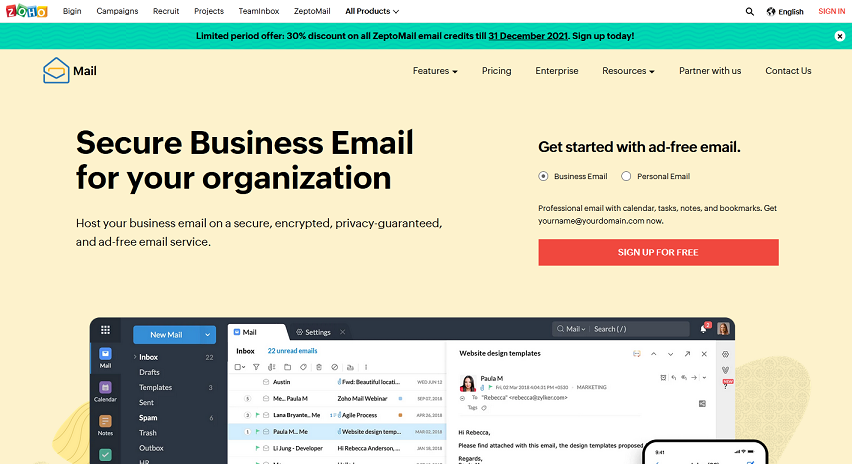
Although Zoho Mail offers a free email service, Zoho is primarily a business-oriented web suite of software.
The minimalist design may be the first thing you notice when writing a message, which can be a good thing. When you create a new message, use the small tabs at the top of the page to rapidly navigate between it and the rest of your mail.
Using the Streams feature, you can easily form groups in which you and your team members may engage with shared messages and attachments. It functions similarly to a private social networking site.
You can use all of the regular compose features, but you can also include files from Zoho Docs, Google Drive, OneDrive, Box, and other services, as well as include tables in your messages. It also allows you to create new notes and tasks, use keyboard shortcuts, enable auto-management filters, set up vacation answers, and add custom domains to an allow or block list.
2. Yahoo Mail
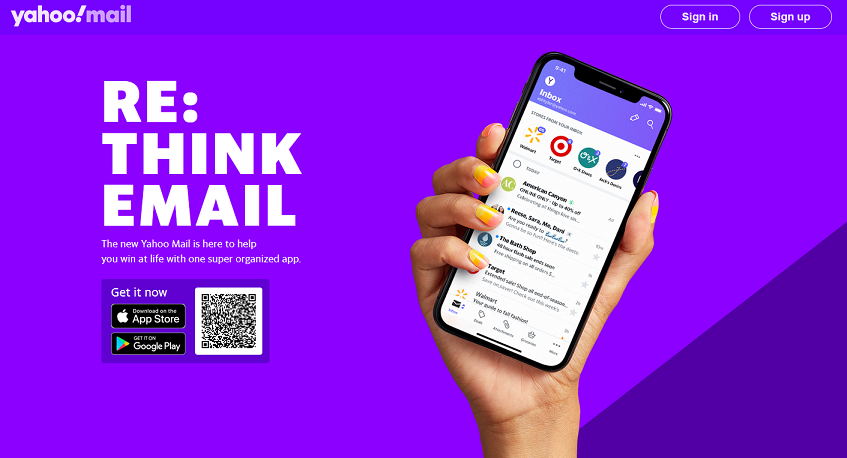
Yahoo Mail is notable because each new member receives 1 TB of free email storage. The compose window is similar to Gmail, with one important difference: you can easily switch between inline picture attachments and normal file attachments.
When it comes to alternate identities or aliases, Yahoo Mail is perhaps the best email service. You can create disposable addresses that are linked to your mailbox without disclosing your actual address. This function comes in handy when you sign up for accounts and don’t want your regular inbox to be inundated or clogged with irrelevant email; erase the disposable address if the spam becomes too much.
You may also include GIFs from a built-in GIF collection, utilise themes to adjust the website’s background and colour scheme, and import contacts from a file on your computer and other accounts such as Facebook or Outlook. You can also utilise the built-in notepad, attach files from Google Drive or Dropbox, use the online calendar app, and connect additional accounts to handle email from a single interface.
3. Gmail
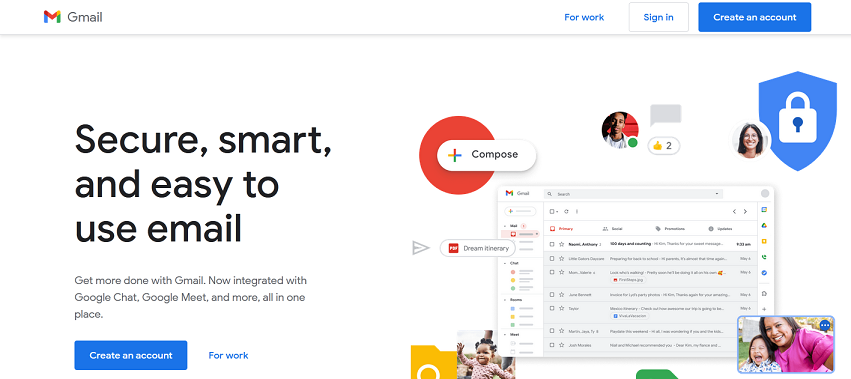
It’s no surprise that Gmail is at the top of this list of the best free email accounts. Google’s free email service has a modern look and feel, is tightly connected with the company’s other services, and does an excellent job of spam filtering.
Other useful features include the ability to postpone emails for later, send and request money with Google Pay, schedule emails to be sent later, and view mail offline. You may also send emails that have an expiration date and require a unique code to open, store messages in a 15 GB vault, share files from your Drive account, undo sending messages, and set up vacation responses.
Gmail is more intimately connected with Google’s other products now that Google Workspace is open to everyone. Workspace allows you to work on projects with others and have virtual meetings. It integrates with Meet’s picture-in-picture functionality, allowing you to see and hear the people you’re collaborating with while writing a message or reading an email.
Gmail’s interface may be customised by applying different themes, accessing a plethora of advanced options, creating filters and labels, importing email from other email accounts, and using a chat client. You can also install gadgets (add-ons) to increase the capabilities of Gmail.
4. iCloud Mail

ICloud Mail is an intriguing service because many people are unaware that they are only a few steps away from having one. As a result, it is one of the better providers: Most folks can put it up in a matter of seconds.
ICloud Mail is free for anyone who creates an Apple ID, but it is not confined to Apple products. Anyone may sign up for a free iCloud ID and use it to access iCloud Mail on their PC.
After creating an account, you may log in from any computer and access a suite of goods in addition to your mail, like as notes, reminders, images, iCloud Drive material, contacts, calendar events, and anything else synced to iCloud from your iOS device.
The email component of iCloud isn’t particularly sophisticated, and it’s unlikely to meet your needs if you require a wide range of alternatives. It is, however, simple to set up, and you do not have to go through the arduous process of inputting your name and selecting a password. All of this is compatible with either your existing Apple ID or a new free iCloud account.
You get 5 GB of free iCloud storage for emails and other iCloud files, IMAP support, forwarding options, huge file attachment support (up to 5 GB through Mail Drop), and a two click unsubscribe method for unwanted emails.
5. Outlook.com
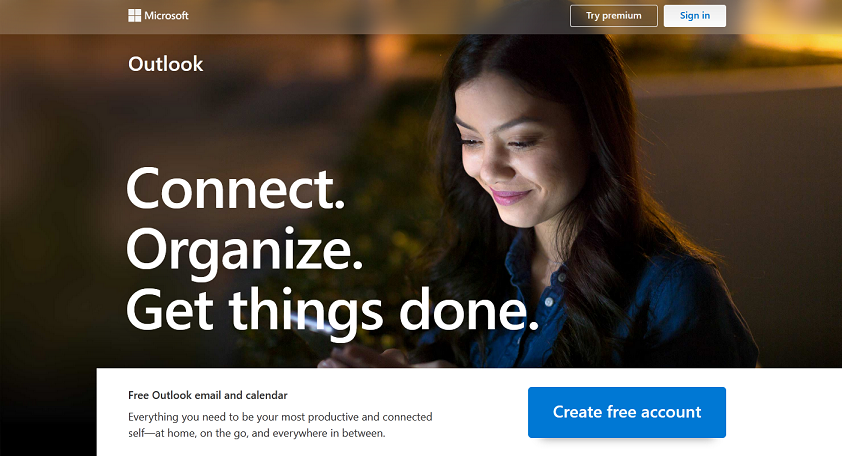
Microsoft Outlook is Microsoft’s free email service, and it, like Gmail, offers a decent, user-friendly layout. It comfortably comes in second to Google’s service, and it’s even tied for the best free email provider.
The website is simple to use; simply right-clicking an email to access other options such as moving and deleting messages and searching for all emails from a single sender.
Outlook offers mail rules, which means you may configure new messages to automatically move to a specific folder, be categorised, marked, or forwarded if certain circumstances are satisfied. You can also connect to Skype via email and use add-ons like as PayPal and DocuSign.
6. Yandex Mail
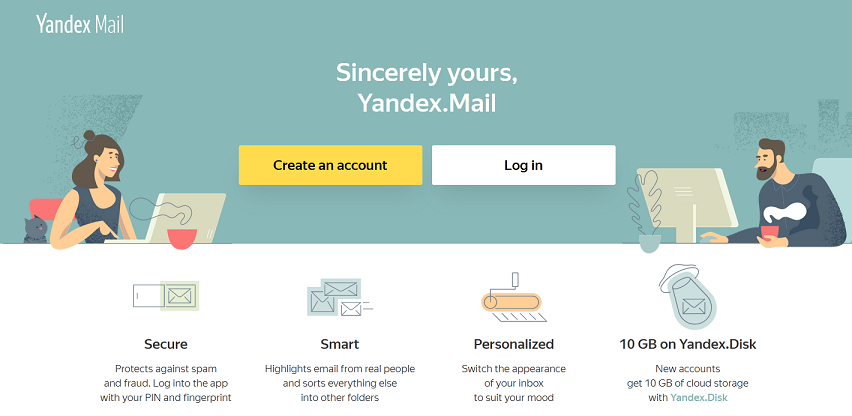
Yandex is a Russian firm that offers a variety of products and free email accounts, including 10 GB of cloud storage, Yandex.Calendar, and a search engine. Your Yandex.Mail email account, like Google, allows you to access various services with a single login.
The user interface is user-friendly. It’s easy to understand and has a simple interface while still containing all of the necessary tools. This service, like the majority of the others on this list, supports email filters, contact importing and exporting, tasks, and hotkeys.
However, it is also distinctive in many aspects, making it one of the best available. You can easily forward numerous messages; they are sent as file attachments. Emails can be downloaded as EML files, delayed messaging is available, you can be notified when an email is received and reminded later if you don’t receive a response, and the section after @ can be your website domain name (for free).
7. AOL Mail

Another free email account option is AOL Mail. The home page features top stories from AOL.com, which, depending on your preferences, can be perceived as a welcome addition or as a cluttered addition.
You can filter your messages, like with most email providers, to show only unread or read emails, or flagged or unflagged messages. AOL Mail allows you to block email senders and set up filters.
Your AOL.com account includes a calendar and to-do list, both of which are available from the inbox. Some functions, such as a chat room, do, however, necessitate a paid AOL Desktop Gold subscription.
The IMAP and POP server settings are no longer available in the AOL settings, but you can get them here: IMAP and POP if you require them to utilise your email with other clients.
8. ProtonMail
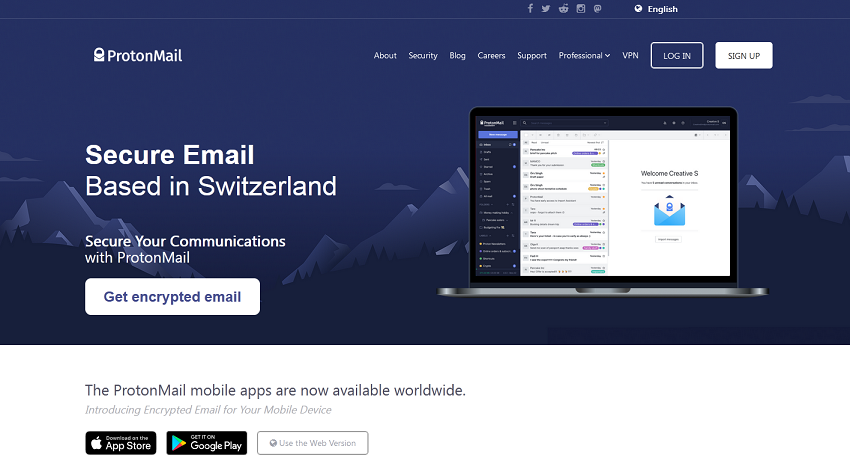
The primary distinction between ProtonMail and other email services is that this one is focused on email encryption. The concept is that you can send email without worrying that ProtonMail or anybody else other than the receiver would read it.
Messages sent to other users of ProtonMail are always encrypted. Otherwise, when you’re ready to send an email to someone who doesn’t use ProtonMail, click that option first. When you encrypt a communication, you can select an expiration time, after which it is destroyed and unreadable.
The highest expiration time is four weeks (28 days), but you can choose something shorter, such as one to six days or one to twenty-three hours. If you send a message to a non-ProtonMail user without specifying an expiration date, the message will be deleted after 28 days.
Recipients of encrypted messages open the email by clicking on a link that prompts them for their password, after which the content is decrypted and shown in the browser. They don’t need a ProtonMail account to reply through an encrypted channel with the same message they decrypted.
Link Confirmation is another privacy-conscious feature that protects against phishing attacks by displaying a pop-up window when you pick a link, allowing you to confirm where it leads before actually going there.
9. Tutanota
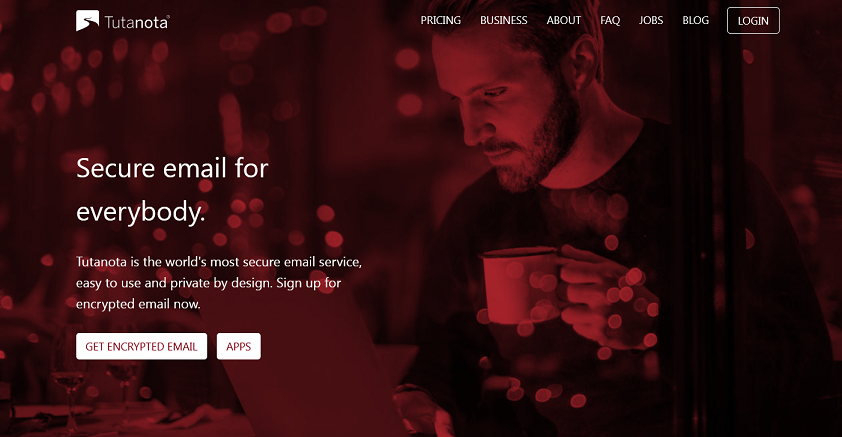
Tutanota (Latin for “tuta nota,” which means “secure communication”), like ProtonMail, automatically encrypts your emails. You can, however, disable end-to-end encryption if you like.
One thing that strikes out is that you cannot establish an account unless you have created a secure password. Some places advise you to strengthen your password but still accept it: Tutanota demands it.
The online interface is simple, with menu transitions that bring together mail folders and email settings. When sending communications to non-users, you have the option of making them password protected or leaving them unencrypted. If a password is specified, the receiver receives a personalised link to view the message; to read and respond, they must enter the password.
The best feature is that even if the user does not use Tutanota to answer to an email, the messages are still stored in the temporary account. You can communicate with any other email service, and the recipient can keep the link open at all times.
Tutanota, while not as well-known as Gmail or Yahoo, allows you to have an email signature, use up to 1 GB of storage, and automatically add emailed recipients as new contacts. Premium features are available for a fee.
10. 10 Minute Mail
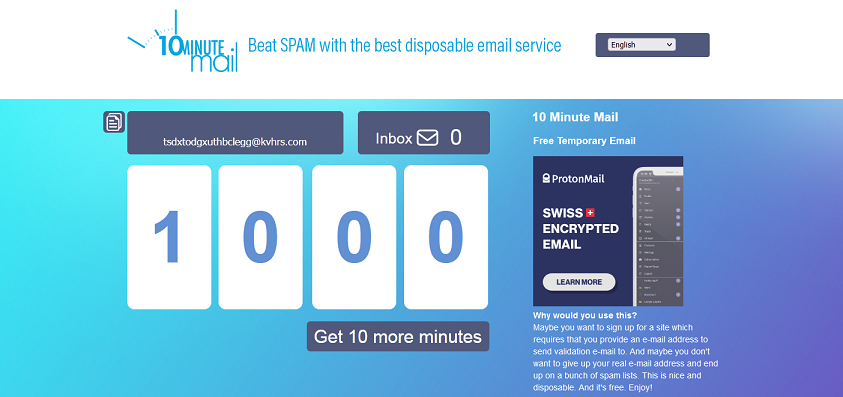
10 Minute Mail is one of the best email services if you need an email address right away, without having to go through the regular user registration process.
As the name implies, it is not a full-fledged email provider because it only provides you with a 10-minute account. It is included here, though, because it is ideal for when you require a temporary email account.
Instead of using your primary email address for anything else, enter a throwaway address from this site. You’ll receive emails just like you would with a regular account, but it’s not linked to your identity, and when the timer expires, you don’t have to worry about cancelling the account, deleting the emails, or anything else—just exit the page or let the timer expire.
When you’re testing a service and don’t want emails in your normal inbox, 10 Minute Mail is ideal. It’s also useful when giving out your email address to someone you don’t know. It’s a real email account from which you can get verification emails and replies, but it vanishes quickly.
You can use it for an additional 10 minutes if necessary, but you must use the button on the email page to reset the clock before the timer expires.
11. GMX Mail
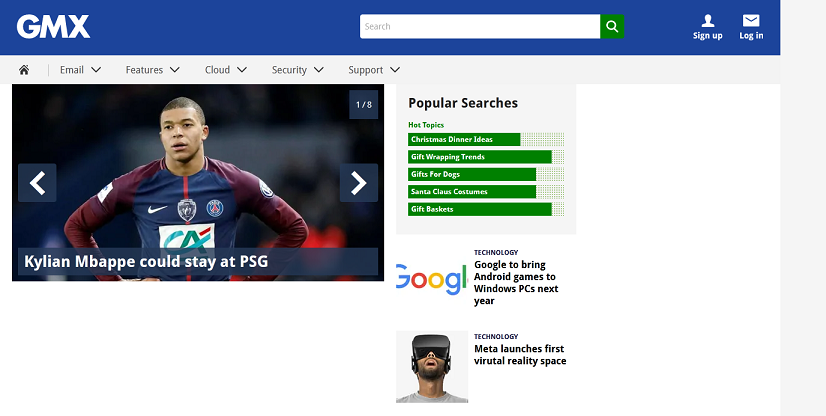
Anyone who requires many email accounts with a centralised inbox. While you may not have heard of GMX Mail, it has been around for a long time (since 1997) and offers a number of features that make it worthwhile to examine.
First and foremost, GMX provides 65GB of storage. For a free email service, that’s a lot of space. In fact, they say that you can hold nearly 500,000 messages in your Inbox!
Another useful feature is the ability to send huge attachments. While many services have attachment size limits for email, GMX Mail allows you to send files up to 50MB. That’s ideal if you frequently share a big number of images, presentations, or other large files from your account.
But the feature that truly distinguishes GMX Mail is the option to create up to ten alias email addresses from within a single account. This can be beneficial in a variety of situations, both personally and professionally.

